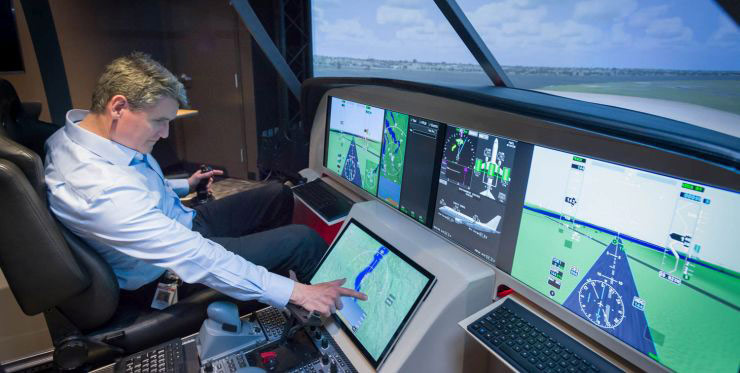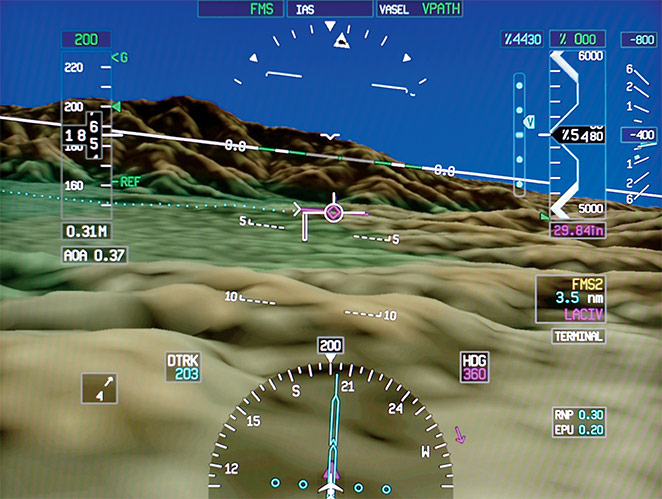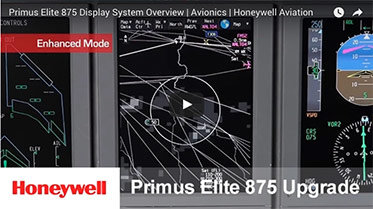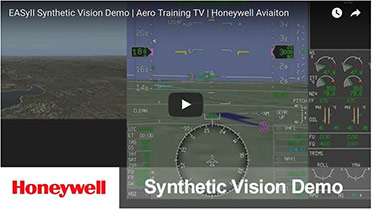What do business aviation pilots think of this? We talked to U.S.-based business aviation pilots to gain their thoughts about the use of new synthetic vision technology and how it can benefit them during various phases of flight.
Mike O’Keefe, senior vice president of aircraft sales at Florida-based Banyan Air Services, and also an instrument and seaplane rated ATP holder with 35 years of flying experiences, and is currently flying a Honda Jet, which provides options to turn Synthetic Vision on or off.
“Where it really is beneficial is when you’re in the terminal environment, on the approach, or especially when you’re in mountainous terrain. Having that synthetic vision is a tremendous tool for keeping you out of the way of mountains,” said O’Keefe who also uses SV when flying around lakes to provide alerts of radio antennas and other obstacles he’s encountered before.
Michael Gerber, director of operations for Las Vegas-based private charter operator NV Jets flies Lear Jets and admits to being an “old school pilot,” who sees the benefits in Synthetic Vision technology, as long as pilots maintain manual flying skills.
“With all of the color that’s been added it’s amazing how you can see mountains and the runway centerline, with everything out in front of you,” said Gerber.
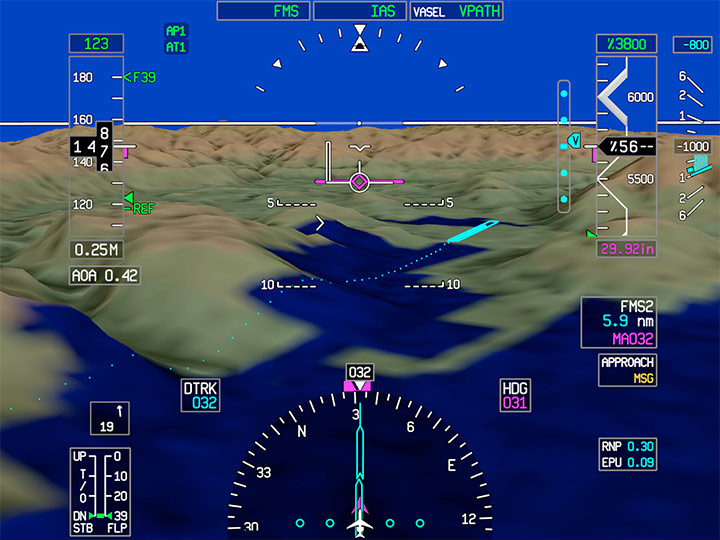
Where it really is beneficial is when you’re in the terminal environment, on the approach, or especially when you’re in mountainous terrain.
“However, the levels of automation in synthetic vision and other components of the EFIS (Electronic Flight Instrumentation System), is that the automation has become a crutch for some pilots. A lot of them have not had to plan descents simple easy things like a 3 to 1 descent or 2 to 1 descent other than maybe once in flight school or maybe one time getting their private, one time getting their instrument ratings, and because they don’t keep those skills sharp anymore they rely on the automation. We need to be sure that the manual skills are still there in case of failure,” he said.










